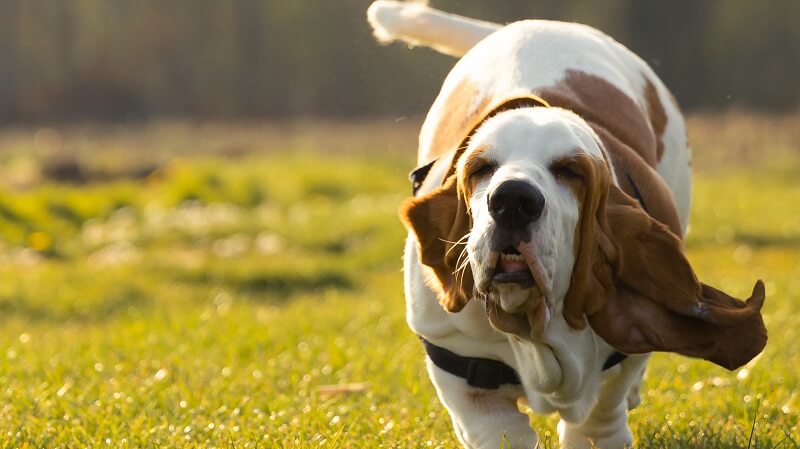
How To Craft A Cozy Cat Vest From Fabric Strips
Have you ever seen your feline friend lounging around and thought, “What could possibly make this picture more adorable?” The answer is simple: a cat

Ever wondered about the swiftest canines? The fastest dog breeds can reach speeds beyond 20 mph!
While the average pace for most dogs is between 15 and 20 mph, certain breeds outstrip this range effortlessly.
This article delves into the numerous elements that affect a dog’s inherent ability to sprint, considering factors like age, size, and physical build.
We’ll explore the ideal body structure that contributes to a dog’s swiftness and introduce you to the top 15 speediest dog breeds around the world.
And for those curious about the other end of the spectrum, we haven’t forgotten! You’ll also find out which breed lags behind in speed, needing a significant advantage to compete in a race.
Just as a dog’s size plays a crucial role, various other aspects determine a dog’s peak velocity. For example, respiratory issues can significantly impact a dog’s running speed and endurance.
This is linked to how effectively a dog’s lungs can transfer oxygen to the bloodstream and muscles.
Understanding these factors is vital if you want to maximize your dog’s running potential, especially among the fastest dog breeds.
Whether you’re keen on Canicross, engaging in bikejoring, or simply enjoying jogging with your canine companion, knowing your dog’s running capabilities is crucial.
Moreover, investing in appropriate gear is essential for both your and your pet’s comfort and safety. For top-quality dog running and pulling equipment, explore the offerings on our website.
Our collection includes our specialized no-pull harness, designed to enhance your outdoor adventures with your speedy furry friend.
A dog’s running speed is largely influenced by its physical attributes.
The size of a dog plays a significant role in its velocity; for instance, the compact and robust Shih Tzu averages a speed of just 6 miles per hour, making it the slowest of all dog breeds.
In stark contrast, the greyhound, known as one of the fastest dog breeds, impressively sprints up to 45 miles per hour, though it faces stiff competition from other swift breeds.
On average, when considering all dog breeds together, the typical running speed ranges from 15 to 20 miles per hour.
The anatomy of dogs varies across breeds, yet they share certain traits that contribute to their remarkable running abilities.
A key factor in their speed is the canine skeletal structure, especially notable in the fastest dog breeds.
Like the cheetah, the swiftest land animal reaching speeds up to 75mph, dogs have a flexible spine. This spine elongates and compresses with each stride, extending the distance covered per step.
Such adaptations evolved to aid dogs in pursuing prey in the wild.
Another significant aspect is the absence of collarbones in dogs, which grants their shoulders greater flexibility, enhancing their running efficiency.
The velocity at which a dog can run is determined by various factors. Understanding these will provide clarity on your dog’s running potential and the reasons behind it:
The efficiency of a dog’s running is significantly influenced by its respiratory and cardiovascular systems. These systems are vital in supplying the body with the necessary energy for intense physical activities.
They provide muscles with essential nutrients, oxygen, and the energy needed for muscle power and recovery.
A larger lung capacity in dogs enhances the oxygenation of blood, thereby increasing the speed and power of their physical actions.
Consequently, dogs with the largest lung capacities and hearts relative to their body size are often classified among the fastest dog breeds.
Like humans who consult doctors before starting a new exercise regimen, it’s advisable to check with your veterinarian before initiating a running program with your dog. Various health aspects could indicate whether your dog is an apt running companion, impacting how fast they can run and if it’s safe or healthy for them:
Now that we understand the factors contributing to canine speed, let’s dive into the world of the fastest dog breeds and discover why they are so adept at reaching remarkable velocities.
Now that we understand the factors contributing to canine speed, let’s dive into the world of the fastest dog breeds and discover why they are so adept at reaching remarkable velocities.
The Greyhound is not only the fastest dog breed globally but also a long-standing participant in racing events since 1919. Despite controversies from animal rights groups regarding the sport, the Greyhound’s thin, slender body, large heart, and lung capacity make it an unparalleled sprinter. They can even match thoroughbred racing horses in speed.
Following closely is the Saluki, or the Persian Greyhound, capable of speeds up to 42 mph. Favored by Middle Eastern royalty for their hunting prowess, these dogs are lean and leggy, ideal for high-speed pursuits.
Known for their elegant, flowing coats, Afghan Hounds combine beauty with speed, reaching about 40 mph. Their tall, slender bodies are perfectly structured for sprinting.
The Hungarian Vizsla, a favorite for its trainability and striking golden-red coat, is among the fastest dog breeds, hitting 40 mph. Their athletic nature makes them excellent running partners.
Despite their small stature, Jack Russell Terriers, bred originally for fox hunting, can reach speeds of around 38 mph. Their size is no barrier to their incredible sprinting ability.
With a top speed of 37 mph, the Dalmatian, famous for its spotted coat and the Disney movie “101 Dalmatians,” is well-suited for running. Originally bred as coach dogs, they possess excellent stamina.
A smaller cousin to the Greyhound, Whippets, can reach 35 mph. Their resemblance to the fastest dog breed extends to their high lung capacity and lean build.
The Borzoi, or Russian Wolfhound, can sprint up to 35 mph. Dating back to the 17th century, these dogs are more sprinters than distance runners but possess a quiet, respectful demeanor.
Dobermans, known for their intelligence and speed, can reach 32 mph. Their athletic build makes them ideal for dog racing events like Canicross.
German Shepherds, famed as guard and sniffer dogs, also rank among the fastest dog breeds, reaching speeds of 30 mph. They are more suited for distance running.
The Border Collie, a sheepdog breed, can hit 30 mph. Their intelligence and obedience, coupled with their speed, make them excellent pets for active owners.
Originally hunting dogs, Standard Poodles are athletic and fast, reaching 30 mph. Their hypoallergenic curly coats make them popular family pets.
Siberian Huskies, with a top speed of 30 mph, excel in long-distance running and pulling. They are well-suited for activities like Canicross and bikejoring.
Scottish Deerhounds, designed for deer hunting, can reach speeds of 28 mph. Their shaggy coats add to their charm, and their build is similar to the Greyhound’s.
Giant Schnauzers, intelligent and fast, can reach 28 mph. They excel in various activities and are loyal companions, suitable for people with allergies due to their non-shedding coats.
Each of these fastest dog breeds boasts unique characteristics that contribute to their incredible speed, making them stand out in the canine world.


Have you ever seen your feline friend lounging around and thought, “What could possibly make this picture more adorable?” The answer is simple: a cat

The moment you consider a dog hunting vest for your adventurous companion, you’re stepping into a world where safety meets functionality. This vest is not

The concept of a dog cooling vest is a game-changer for pet owners looking to enhance their dog’s comfort during those relentless summer days. Imagine

When you first consider crafting a tactical dog vest, it’s not just about embarking on a fun DIY project; it’s about ensuring your furry companion’s

Have you ever seen your feline friend lounging around and thought, “What could possibly make this picture more adorable?” The answer is simple: a cat

The moment you consider a dog hunting vest for your adventurous companion, you’re stepping into a world where safety meets functionality. This vest is not

The concept of a dog cooling vest is a game-changer for pet owners looking to enhance their dog’s comfort during those relentless summer days. Imagine

When you first consider crafting a tactical dog vest, it’s not just about embarking on a fun DIY project; it’s about ensuring your furry companion’s
Secure and Empower, Walk Responsibly
Copyright © 2025pettacticalharness. All Rights Reserved.